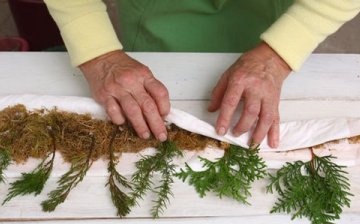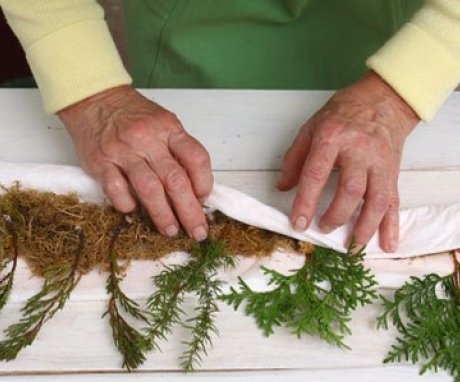Homemade cypress: care and reproduction
The home cypress belongs to the evergreen conifers of the cypress family. These are shrubs or trees with a spreading or pyramidal crown. The cypress differs from the cypress in the height and width of the crown, as well as in the size of the cones, which, respectively, are smaller than a large fellow and contain only two seeds. In nature, cypress trees can reach 30 meters or more in height. At home, the height is much lower. The trunk is covered with brown or brownish red scaly bark.
Content:
Types of cypress
The most popular types of cypress:
- Elwoodi cypress. This ornamental coniferous plant reaches a height of 3 meters. Its crown is conical, and the needles are painted bluish-green. Elwoodi cypress can be grown not only indoors. In regions where the winter temperature drops to -5 degrees, such plants are planted in the open field. In cold conditions, cypress grows well on balconies, loggias and in winter gardens. It is unpretentious and develops well even in the shade.
- Pea cypress. In appearance, this cypress is similar to a juniper. Has a wide pyramidal crown. The branches are arranged so that they form patterns. The needles are scaly, bright green and opposite. The bark is colored brownish red. Grown both in the open field and in greenhouses and conservatories. In nature, it grows in eastern Asia and North America.
- Lawson's cypress. Outwardly, this species looks like a cypress. It differs in that its branches are flatter, like that of a thuja. The bark is brown and scaly. This is an indoor or non-ground version of a cypress. At low temperatures, the needles turn yellow and die off. Therefore, for the winter, the plant is brought into a well-lit room, where the ambient temperature does not drop more than 7 degrees. Lawson's cypress grows up to 3 meters. Poorly tolerates drying out of the soil.
Cypress home care
Basically, all types of cypress are quite unpretentious and grow well both at home and in the open field. Observing a few simple rules for care, you can enjoy the evergreen cypress tree for many years at home, in a greenhouse, winter garden or in the country.
- All types of cypress trees with green, gray or bluish needles are planted in partial shade, if the plant has yellowish needles, then for this type it is necessary to choose a sunny place.
The soil should be light and loose, with good drainage. Almost all species do not tolerate stagnant water well. In clay and calcareous soils, the cypress grows poorly and is very sick. When planting the Elwoodi cypress, it is necessary to prepare a large pit, the diameter of which should be a meter. Sand and broken brick are laid out at the bottom of the depression. The soil for falling asleep is mixed with peat fertilizer.
Fertilizer for cypress is applied annually in the spring. After that, the soil must be well watered and loosened when the water is completely absorbed, and the surface of the soil dries out slightly.
Watering the plant:
- It is necessary to water the plant regularly, since cypress trees do not tolerate well not only stagnant water, but also drying out of an earthen coma and dry air.
- Therefore, in especially hot months of summer or during winter heating, the air around the plant must be humidified.
- To water the cypress less often, you can mulch the soil under its crown with chips or peat.
Cypress pruning held in the spring. At this time, dry branches are removed. The plant does not need to be formed. But if desired, if the crown seems to be very spreading, the branches are pulled together. With the development of branches only in one direction, the trunk is lubricated with a special solution in more empty places. This stimulates growth and makes the crown full.
Plant propagation
Cypress can be propagated in three ways. One of the laborious processes is seed-assisted reproduction. In the fall, when the bumps ripen and burst, the harvesting period begins. These seeds can plant after stratification, which significantly improves the germination rate. For sowing, the end of February or early March is best suited.
The container with the planted cypress seeds must be kept for 2 months at a temperature of 5-7 degrees.
After, transfer to a warm place where pecking will begin. By the middle of summer, the grown sprouts can be planted in the ground in a shaded place or left indoors by planting each sprout in a separate small container. For the winter, young cypress trees are insulated or transferred to the room, planting each in a separate pot. Also, in young plants, the soil should be slightly moist; at an early age, cypress trees are especially sensitive to drying out or waterlogging of the soil. And after 2 years, the matured and strengthened plant is transferred to a permanent place of growth.
The simplest way of propagation is considered to be cuttings:
- The upper parts of young branches are cut off, about 10-12 cm. From the side of the cut, a small part of the stem must be cleaned of needles.
- Prepare a container for planting with fertile light and well-drained soil.
- Cuttings can be prepared for planting by holding their cut parts for 2-3 hours in a solution that stimulates root growth.
- Further, the cuttings are immersed in the substrate along the needles. That is, it is necessary to bury that section of the cutting into the soil that was previously cleared of needles.
- For more effective rooting, it is necessary to create a greenhouse.
- When the cuttings have taken root, and the roots have developed well, they can be transferred to separate pots, and planted in open ground at 2 years of age.
The third way is reproduction using layering. This method is suitable for plants planted outdoors. To do this, choose a healthy branch located close to the ground. It is bent down, strengthened on the soil and added dropwise, preliminarily the place that will take root, cleaned of bark and lubricated with a solution that stimulates root growth. You can first make a small depression for it. The main thing is that the branch does not break and crack. When the branch is rooted, it can be separated from the mother bush. And after a certain period, when the young cypress grows stronger, the plant is transplanted to a new place.
With proper care of the plant and maintaining the desired temperature, diseases and pests are not afraid of it.
Indoors, spider mites sometimes attack. When found, the entire plant needs treat with a special preparation... All neighboring plants and flowers are also processed.
More information can be found in the video.













